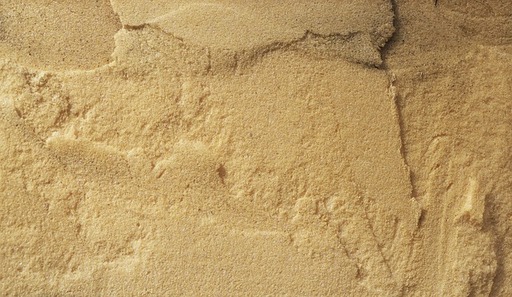
Water damage to insulation can be a silent but deadly threat to our homes, subtly undermining the energy efficiency and structural integrity of our living areas. From discolored areas and foul odors to material warping, the indicators of water damage to insulation are frequently subtle but require prompt attention. In this detailed guide, we explore the complexities of repairing water damage to insulation, revealing the crucial actions required to restore a home’s thermal defenses and, as a result, its general health.
It is important to first understand the importance of this project. Beneath the obvious stains and discolorations, there is a complex network of issues that require a methodical and cautious approach. Regardless of whether you are working with fiberglass, cellulose, or foam insulation, the effects of water damage can penetrate different materials, impacting not only the effectiveness of your home’s thermal barriers but also presenting potential health risks due to mold growth. With this in mind, our investigation will provide you with useful knowledge about recognizing and evaluating water damage as well as walk you through the painstaking process of removing damaged insulation and choosing and installing suitable replacements.
See also our post on How to assess water damage in a commercial property
Identifying Water-Damaged Insulation
Understanding the signs of water damage is the first step in initiating proper repairs. Here are some of the ways to detect water-damaged insulation:
Recognizing Stains and Discoloration
Look for visible stains or discoloration on insulation materials, indicating water intrusion and potential damage.
Detecting Musty Odors
A musty or damp smell is a clear indicator of water-related issues in insulation, signaling the need for closer inspection.
Examining Mold Growth
Visible mold on insulation surfaces is a direct consequence of water damage, requiring immediate attention to prevent health hazards.
Checking for Changes in Texture
Water-damaged insulation may experience a change in texture, becoming clumped or uneven compared to its original state.
Investigating Temperature Fluctuations
Inconsistent indoor temperatures might result from compromised insulation, emphasizing the need to assess potential water damage.
Assessing the Extent of Damage
Before starting repairs, evaluate the extent of water damage to determine the appropriate course of action. Here are the steps to follow:
Locating the Source of Water Intrusion
Identify and address the source of water infiltration to prevent ongoing damage and ensure effective repairs.
Evaluating Insulation Material
Different insulation materials respond differently to water. Evaluate the type of insulation and its condition to tailor the repair approach.
Checking Structural Integrity
Inspect the structural elements around the damaged insulation to ensure there is no compromise to the building’s stability.
Measuring Moisture Levels
Use moisture meters to gauge the level of moisture within the insulation, guiding decisions on repair or replacement.
Considering Safety Hazards
Assess potential safety hazards such as electrical issues or structural damage associated with water damage, prioritizing safety during repairs.
Removing Water-Damaged Insulation
Before installing new insulation, it’s crucial to remove the damaged material thoroughly through the following steps:
Cutting and Removing Damaged Sections
Use appropriate tools to cut and remove sections of insulation that have been visibly affected by water damage.
Ensuring Proper Disposal
Dispose of water-damaged insulation materials following local regulations and guidelines for waste management.
Addressing Mold Contamination
If mold is present, take necessary precautions, such as wearing protective gear, and follow proper procedures for mold removal.
Cleaning and Drying the Area
Thoroughly clean and dry the affected area before installing new insulation to prevent the recurrence of water-related issues.
Confirming Structural Integrity
Reassess the structural integrity of the affected space after removing damaged insulation, addressing any issues before proceeding.
See also our post on How to Assess Water Damage in a Mobile Home
How to Select Replacement Insulation
Choosing the right replacement insulation is crucial for restoring energy efficiency and thermal performance by following this guide:
Considering Insulation Types
Explore various insulation types, such as fiberglass, cellulose, or foam, considering factors like R-value and moisture resistance.
Consulting with Professionals
Seek advice from insulation professionals to determine the most suitable material and installation method for your specific situation.
Ensuring Proper Sizing
Accurate measurements of the insulation space are essential to ensure proper fitting and optimal performance of the replacement material.
Addressing Fire Safety
If applicable, consider fire-resistant insulation options, especially in areas with higher fire risk.
Checking for Environmental Impact
Evaluate the environmental impact of insulation materials, opting for eco-friendly options when possible.
Section 5: Installing New Insulation
Proper installation is key to the effectiveness and longevity of the new insulation.
Following Manufacturer Guidelines
Adhere to the manufacturer’s guidelines for installation, ensuring the correct application and maximizing the insulation’s performance.
Sealing Gaps and Joints
Use appropriate sealants to fill gaps and joints in the insulation, preventing air and moisture infiltration.
Ensuring Uniform Distribution
Distribute the insulation material uniformly to achieve consistent thermal performance throughout the designated area.
Considering Vapor Barriers
In areas prone to high humidity, incorporate vapor barriers to prevent moisture from affecting the new insulation.
Verifying Energy Code Compliance
Ensure that the installation meets local energy codes and standards, promoting energy efficiency and compliance.
See also our post on Helpful Tips on How to Handle Water Damage During a Home Remodeling
Implementing Preventive Measures
Take proactive measures to prevent future water damage to insulation like:
Improving Drainage Systems
Enhance the building’s drainage systems to redirect water away from vulnerable areas, reducing the risk of water damage.
Sealing Exterior Openings
Seal gaps and openings in the building’s exterior to prevent water intrusion and safeguard insulation.
Regular Inspections
Conduct periodic inspections to identify potential issues early on and address them before significant damage occurs.
Monitoring Indoor Humidity
Keep indoor humidity levels in check to prevent the development of conditions conducive to water damage and mold growth.
Updating Weatherproofing Measures
Ensure that windows, doors, and other exterior elements are properly weatherproofed to prevent water infiltration.
Seeking Professional Assistance
In some cases, professional assistance may be necessary for complex repairs or extensive water damage. Here are ways to seek professional assistance:
Consulting with Insulation Experts
Engage with insulation experts to assess the situation and receive guidance on the most effective repair strategies.
Hiring Certified Contractors
When extensive repairs are required, consider hiring certified contractors experienced in insulation restoration.
Addressing Underlying Issues
Professionals can identify and address underlying issues contributing to water damage, ensuring a comprehensive repair.
Verifying Insurance Coverage
Check your insurance coverage to determine if water damage to insulation is eligible for reimbursement, providing financial support for repairs.
Documenting Repairs
Keep detailed records of the repair process, including documentation of materials used and actions taken, for future reference.
Conclusion
Repairing water-damaged insulation is an essential part of keeping a cozy and energy-efficient home. Homeowners can do this by recognizing the symptoms of the damage, determining the extent of the problem, and implementing a methodical repair process. Other important steps in this all-inclusive approach include choosing appropriate replacement insulation, making sure it is installed correctly, putting preventive measures in place, and calling in professional help when necessary. With meticulous attention to detail and a dedication to continuous maintenance, homeowners can protect their homes against the damaging effects of water damage, ensuring a safe and comfortable living environment.






